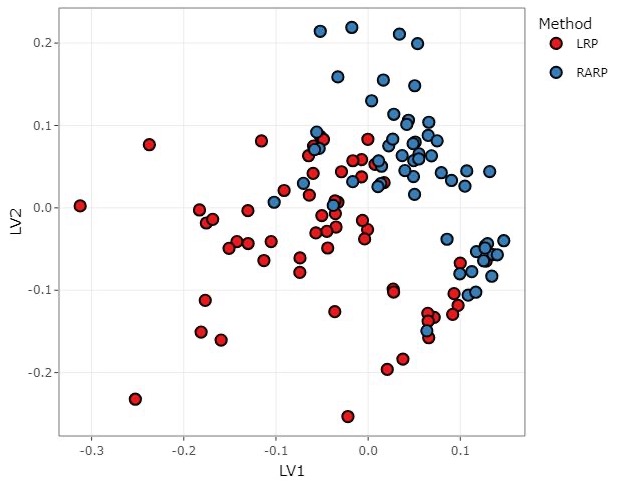Back
Poster, Podium & Video Sessions
Podium
PD60: Prostate Cancer: Localized: Surgical Therapy V
PD60-09: Laparoscopic Versus Robot-Assisted Radical Prostatectomy: Ten-Year Outcome Of A Prospective Randomised Trial
Monday, May 16, 2022
2:20 PM – 2:30 PM
Location: Room 245
Enrico Checcucci, Orbassano (Turin), Italy, Eugenio Alladio, Turin, Italy, Sabrina De Cillis, Stefano Granato, Daniele Amparore, Alberto Piana, Federico Piramide, Gabriele Volpi, Michele Sica, Paolo Verri, Beatrice Carbonaro, Juliette Meziere, Davide Zamengo, Marcello Della Corte, Edoardo Dibilio, Angela Pecoraro, Giovanni Cattaneo, Orbassano (Turin), Italy, Michele Di Dio, Cosenza, Italy, Matteo Manfredi, Francesco Porpiglia*, Orbassano (Turin), Italy

Francesco Porpiglia, MD
Full Professor of Urology
University of Turin
Podium Presenter(s)
Introduction: The advantages of robotic assisted over laparoscopic radical prostatectomy radical prostatectomy (RARP over LRP) have rarely been investigated in a randomised controlled trial. We have previously reported the perioperative and 1 and 5 ys-results of a prospective randomized trial comparing RARP and LRP. The aim of this study was to evaluate 10-yr results from that trial.
Methods: From January 2010 to January 2011, 120 patients (40-75 yrs.) with organ-confined prostate cancer (T1-2-N0 M0 clinically staged according to TNM 2009) and to whom radical prostatectomy was proposed were enrolled and randomly assigned (using a randomization plan) to one of two groups based on surgical approach: the RARP group and the LRP group. All interventions were performed with transperitoneal anterograde technique by the same surgeon.
Continence and potency were evaluated after during 10 yrs of follow-up. Patients were defined as continent if they did not use any pads or used one safety pad per day, potent with an IIEF-5 score >17.
Patients who experienced biochemical recurrence and required adjunctive therapy (radiation therapy and/or hormonal treatment) were registered and compared.
Multivariate data analysis approaches were tested on the collected data to evaluate the differences between RARP over LRP cohorts. Partial Least Squares – Discriminant Analysis (PLS-DA) was employed as supervised classification approach using R and Python software.
Results: The two groups (RARP n= 60, LRP n=60) were comparable in terms of demographic data; no differences in terms of pathological results were found. PLS-DA modeling allowed discriminating RARP over LRP individuals, as reported in the following figure. RARP subjects showed significantly higher continence rates compared to those of LRP individuals. Moreover, PLS-DA models remarked the erection rates and the potency rates (after 5-10 years) as significant for the RARP population. The satisfaction rate after 5 and 10 years turned to be higher in the RARP cohort, too.
Conclusions: This 10 yrs long terms findings confirmed our previously published results at 1 and 5 yrs after the intervention. RARP provided better functional results in terms of the recovery of continence and potency; with higher patient’s satisfaction.
Source of Funding: None.

Methods: From January 2010 to January 2011, 120 patients (40-75 yrs.) with organ-confined prostate cancer (T1-2-N0 M0 clinically staged according to TNM 2009) and to whom radical prostatectomy was proposed were enrolled and randomly assigned (using a randomization plan) to one of two groups based on surgical approach: the RARP group and the LRP group. All interventions were performed with transperitoneal anterograde technique by the same surgeon.
Continence and potency were evaluated after during 10 yrs of follow-up. Patients were defined as continent if they did not use any pads or used one safety pad per day, potent with an IIEF-5 score >17.
Patients who experienced biochemical recurrence and required adjunctive therapy (radiation therapy and/or hormonal treatment) were registered and compared.
Multivariate data analysis approaches were tested on the collected data to evaluate the differences between RARP over LRP cohorts. Partial Least Squares – Discriminant Analysis (PLS-DA) was employed as supervised classification approach using R and Python software.
Results: The two groups (RARP n= 60, LRP n=60) were comparable in terms of demographic data; no differences in terms of pathological results were found. PLS-DA modeling allowed discriminating RARP over LRP individuals, as reported in the following figure. RARP subjects showed significantly higher continence rates compared to those of LRP individuals. Moreover, PLS-DA models remarked the erection rates and the potency rates (after 5-10 years) as significant for the RARP population. The satisfaction rate after 5 and 10 years turned to be higher in the RARP cohort, too.
Conclusions: This 10 yrs long terms findings confirmed our previously published results at 1 and 5 yrs after the intervention. RARP provided better functional results in terms of the recovery of continence and potency; with higher patient’s satisfaction.
Source of Funding: None.


.jpg)
.jpg)